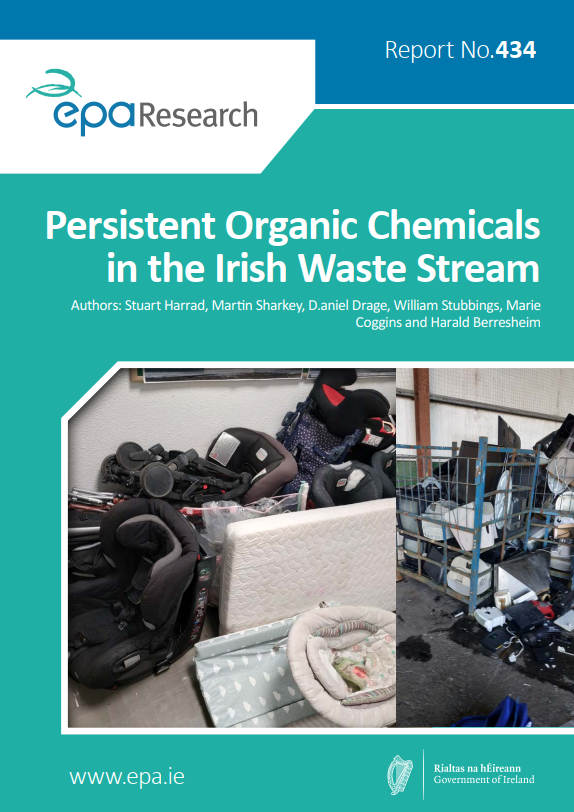Research 434: Persistent Organic Chemicals in the Irish Waste Stream
Authors: Stuart Harrad, Martin Sharkey, D.aniel Drage, William Stubbings, Marie Coggins and Harald Berresheim
Summary:

Project Highlights
Identifying Pressures
The EU is transitioning to a circular economy, in which resources are kept in use for as long as possible, for example by maximising recycling. A potential obstacle is the presence of regulated brominated persistent organic pollutants (POPs) in waste plastics, as articles containing recycled material may be contaminated with such chemicals. To minimise contamination, there are limits on the maximum permissible concentrations of POPs in waste, such that material exceeding these limits may not be recycled.
Effective implementation of such limits presents enormous technical and economic challenges, as conventional methods for measuring POPs are technically demanding and expensive. This project evaluated the feasibility of using hand-held X-ray fluorescence (XRF) spectrometers to measure bromine in waste articles to check compliance with limit values. It also generated an extensive database on concentrations of POPs and related chemicals in waste plastic articles in Ireland. This permits assessment of whether recent bans on the use of some POPs has reduced their presence in Irish waste and establishes a baseline against which the success of possible future restrictions on other chemicals may be evaluated.
Informing Policy
The eco-innovative ‘Sense and Purify’ (Spy) technology, developed by the project, has significant advantages over traditional treatment processes, including low operations costs, significantly lower energy consumption, higher conversion efficiency, better effluent water quality and lower waste production.
From a policy perspective, SPy technology could make it easier to comply with environmental regulations and standards for wastewater treatment. It has proven effective at removing persistent pollutants, such as pharmaceuticals, personal care products and endocrine-disrupting compounds, which can be difficult to remove using conventional wastewater treatment processes. The use of AOPs can help wastewater treatment plants to comply with regulations and standards for discharge of treated wastewater into surface waters.
From a societal perspective, SPy’s findings can help to protect public health and the environment by removing contaminants from wastewater that could potentially harm human health or aquatic life. This can help to ensure that treated wastewater is safe for discharge into surface waters or for reuse in non-potable applications.
From a commercial perspective, the demand for wastewater treatment services is increasing significantly and the market for AOPs and other advanced treatment technologies is growing.
Developing Solutions
SPy technology allows organic molecules and pathogens to be decomposed and mineralised to carbon dioxide, ammonia and water, by generating a high concentration of a powerful oxidising agent, hydroxyl radicals, throughout a water sample with high electrical efficiency. The active agent has no persistent toxicity and can be implemented at source. It is also highly mobile/portable, low cost, compatible with flow-through reactor design, energy efficient and environmentally friendly.
A laboratory-scale prototype reactor was developed that uses titanium feeder electrodes to generate an electric field that allows the voltage of boron-doped diamond (BDD) particles in suspension to be controlled. By controlling electrode separation, the voltage applied to the feeder electrodes and BDD particle size, the BDD particles suspended in the wastewater produce hydroxyl radicals that then decompose the organic pollutants. To monitor the decomposition of organics, UV-Vis spectroscopy was used. The absorbance correlates well with total organic carbon content. The system was tested for the treatment of pharmaceutical wastewater and is capable of mineralising non-steroidal anti-inflammatory and anti-cancer drugs within 1–5 hours.
https://www.epa.ie/media/epa-2020/research/research-publications/Report-Cover-Image-434.png